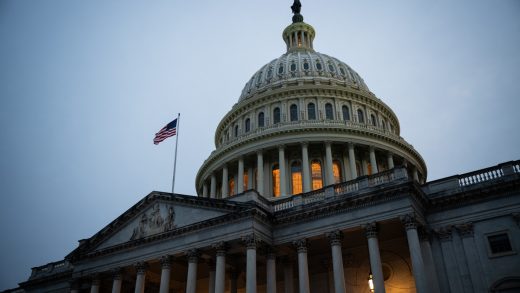
Welcome to The Protocol, CoinDesk’s weekly wrap of the most important stories in cryptocurrency tech development. I’m Margaux Nijkerk, a reporter at CoinDesk.
In this issue:
- BTCFi’s Big Problem: 77% of Bitcoin Holders Haven’t Even Tried It, Says Survey
- Ethereum’s Fusaka Upgrade Passes Holesky Test, Moves Closer To Mainnet
- DoubleZero Mainnet Goes Live With 22% of Staked SOL on Board
- Bee Maps Raises $32M to Scale Solana-Powered Decentralized Mapping Network
Network News
BITCOIN HOLDERS HESITANT TO EXPLORE BTC DEFI : Bitcoin decentralized finance (DeFi), also known as BTCFi, has been touted as the next wave of innovation for the world’s largest cryptocurrency. However, research suggests bitcoin holders themselves are barely engaging. Some 77% of bitcoin holders have never tried a BTCFi platform, according to a survey of more than 700 respondents across North America and Europe by BTC mining ecosystem GoMining. Just over 10% reported having experimented once or twice, while only 8% said they actively use BTCFi services for yield or lending. The survey highlights a stark disconnect between the sector’s promise and its actual reach. “There’s an enormous appetite for these opportunities, but the industry has built products for crypto natives, not for everyday bitcoin holders,” said GoMining CEO Mark Zalan in a statement. That appetite shows up in the data: 73% of respondents expressed interest in earning yield on their BTC through lending or staking, while 42% want access to liquidity without selling. Yet hesitation dominates. More than 40% said they would allocate less than 20% of their holdings to BTCFi products, underscoring the sector’s trust and complexity problem. — Jamie Crawley Read more.
ETHEREUM FUSAKA UPGRADE ON HOLESKY TESTNET GOES LIVE: Ethereum’s next upgrade, Fusaka, just moved closer to going live on the main blockchain after a successful test run on the Holesky test network last week. The Fusaka hard fork comes only a few months after Ethereum’s major Pectra upgrade and is designed to make things cheaper for institutions using Ethereum. One of the changes it introduces is PeerDAS, a feature that lets validators check only part of the data needed instead of full chunks (“blobs”), which helps cut costs for both layer-2 networks and validators. Test networks like Holesky act as practice grounds where developers can safely test new code before it reaches the real chain. Holesky, launched in 2023, was particularly important because its validator setup closely mirrors Ethereum’s mainnet. But over the past few months, Holesky has started showing signs of age and reliability issues. Fusaka is the last upgrade the network will see before it shuts down — two weeks after Fusaka goes live on mainnet. The next two testnet runs are scheduled for October 14 and 28. After those are complete, Ethereum developers will lock in a date for Fusaka’s full mainnet launch. — Margaux Nijkerk Read more.
DOUBLEZERO MAINNET GOES LIVE: A new project wants to give blockchains their own “fast lane” on the internet. The DoubleZero Foundation announced that its highly anticipated mainnet-beta is live. DoubleZero is a network built to speed up how blockchain validators talk to each other. Instead of relying on the public internet, which can sometimes be slow and unpredictable, Solana validators can now connect through DoubleZero’s fiber routes, which let users transact faster. In simple terms, DoubleZero is like a private highway system for blockchains. While normal internet routes are designed to be cheap and broad, they aren’t built for the split-second coordination thousands of blockchain nodes need. DoubleZero says its network reduces lag and makes it easier for validators to process transactions and stay in sync, which could improve both performance and reliability for end users. The project has already seen early adoption. Currently, 22% of staked SOL is plugged into the DoubleZero network. Big industry names like Jump Crypto, Galaxy, RockawayX, and Jito are contributing fiber links and engineering resources, betting that faster internet infrastructure will pay off as blockchain applications scale. — Margaux Nijkerk Read more.
BEE MAPS RAISES $32M IN FUNDING ROUND: Bee Maps, the decentralized mapping project powered by Hivemapper, has raised $32 million in fresh funding to expand its global contributor network and scale its infrastructure, it announced this week. The round was led by Pantera Capital, LDA Capital, Borderless Capital and Ajna Capital, marking one of the largest financings in the decentralized physical infrastructure (DePin) sector this year. Bee Maps is an application on the Hivemapper network, which is one of the largest decentralized physical infrastructure networks (DePIN) focused on mapping data on Solana. Hivemapper enables drivers to contribute data through AI-enabled dash cams, which detect real-time changes on roads (like new signs on the roads, detours, or construction zones), ensuring digital maps can update quickly to stay accurate. Bee Maps leverages this infrastructure by rewarding contributors with its native token, $HONEY, for collecting street-level imagery. The raise highlights strong investor appetite for Bee Maps’ vision of real-time, AI-powered maps. In recent months, Bee Maps has teamed up with major players including Lyft and Volkswagen’s robotaxi program to bring its mapping-data to their platforms. The fresh capital will be used to distribute more devices, enhance AI models that process and update map features and boost contributor incentives tied to $HONEY. – Margaux Nijkerk Read more.
In Other News
- KAIO, the tokenization firm backed by Brevan Howard and Nomura Bank’s crypto-focused Laser Digital, is bringing its tokenized funds to the Sei network (SEI) as real-world asset demand is expanding. The firm, formerly known as Libre Capital, has issued over $200 million in assets, including token versions of feeder funds of Brevan Howard, Hamilton Lane, Laser Digital and a BlackRock fund, with plans to expand access to additional strategies. The tokens, available to institutional and accredited investors, allow for onchain subscription, redemption and reporting. The Sei Network, built for high-speed financial transactions, provides the underlying rails for execution. KAIO’s expansion follows ARK-backed tokenization firm Securitize introducing the $112 million Apollo Diversified Credit Fund, a tokenized feeder fund of Apollo’s private credit vehicle, to Sei. The announcement highlights a growing trend in tokenized real-world assets (RWAs), where traditional investments like bonds, credit and funds are represented as digital tokens. — Kristzian Sandor Read more.
- Yuma, a subsidiary of Digital Currency Group (DCG) focused on decentralized artificial intelligence (AI), has appointed veteran crypto founders Greg Schvey and Jeff Schvey as its new Chief Operating Officer and Chief Technology Officer, respectively, the company said. The hires mark a key expansion for Yuma as it scales operations across the Bittensor network, including validator, mining, and subnet accelerator initiatives, and prepares to launch an asset management division, the company said. The Schvey brothers are best known for co-founding TradeBlock, an institutional crypto data and portfolio management platform acquired by DCG, and Axoni, a blockchain infrastructure firm serving traditional financial markets. Axoni’s largest business unit was acquired by the London Stock Exchange Group (LSEG) in 2024. DCG was an early investor in both ventures. — Will Canny Read more.
Regulatory and Policy
- The Bank of England (BoE) is planning exemptions to its proposed limits on stablecoins holdings, Bloomberg reported earlier this week. The BoE will grant waivers to some firms that need to hold large amounts of tokens, like crypto exchanges, the report said, citing a person familiar with the matter. The U.K.’s central bank will also allow firms to use stablecoins for settlement in its Digital Securities Sandbox, the people said. Last month, it was reported that BoE officials planned to impose caps of 10,000-20,000 pounds ($13,400-$26,800) for individuals and 10 million pounds ($13.4 million) on stablecoins. Digital asset industry figures criticized the plans as unworkable. BoE governor Andrew Bailey expressed skepticism about stablecoins in July, highlighting possible threats to financial stability and warned global investment banks against developing their own. — Jamie Crawley Read more.
- The Securities and Exchange Commission is still looking to formalize an “innovation exemption” for companies to build on digital assets and other innovative technologies in the U.S., potentially as soon as the end of the quarter, said agency Chair Paul Atkins. While acknowledging that the current government shutdown had “hamstrung” the SEC’s ability to make progress on rulemaking, Atkins said working on this exemption is still his priority for the end of the year or the first quarter of 2026, he said at a Futures and Derivatives Law Report event hosted by the law firm Katten Muchin Rosenman LLP in midtown Manhattan on Tuesday. The SEC chair opened with one of his now-common refrains: That crypto is “job one” and the agency has become a pro-innovation body looking to encourage developers and entrepreneurs to build in the U.S. — Nikhilesh De Read more.
Calendar
- Oct. 13-15: Digital Asset Summit, London
- Oct. 16-17: European Blockchain Convention, Barcelona
- Nov. 17-22: Devconnect, Buenos Aires
- Dec. 11-13: Solana Breakpoint, Abu Dhabi
- Feb. 10-12, 2026: Consensus, Hong Kong
- Feb. 17-21, 2026: EthDenver, Denver
- Mar. 30-Apr. 2: EthCC, Cannes
- May 5-7, 2026: Consensus, Miami


